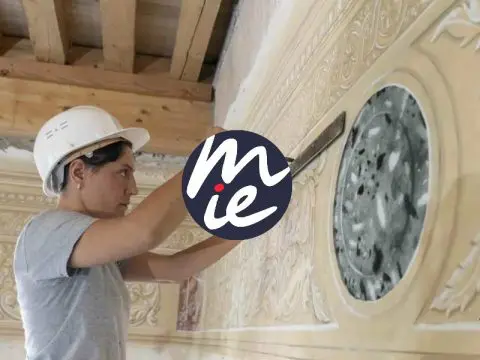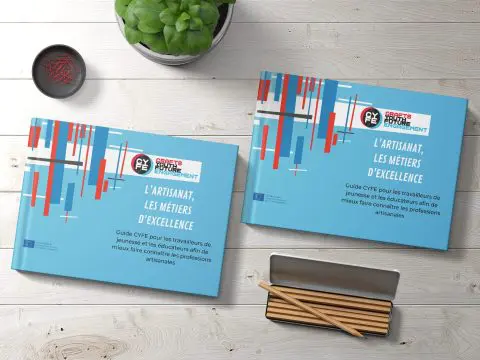-
Frédéric Heurlier, painter registered on Madineurope -
Catherine Angot, painter registered on Madineurope -
Sylvie Van der Kelen painter on surfaces, registered on Madineurope -
Dominique Trente, wall painter registered on Madineurope -
Jean Marc Collier painter registered on Madineurope -
Jean-Marc Collier, wall painter registered on Madineurope -
Paul Czainski, painter registered on Madineurope -
Paul Czainski, painter registered on Madineurope -
Paul Czainski, painter registered on Madineurope -
Paul Czainski, painter registered on Madineurope -
Alan Dodd, wall painter registered on Madineurope -
Alan Dodd, wall painter registered on Madineurope -
Alan Dodd, wall painter registered on Madineurope
Many people ask wall painters to decorate walls, furniture or even floors in order to make their interior unique and to express their originality through landscapes, portraits or even abstract subjects. Affordable, not affordable, easy to get, … let’s try to understand better how this unusual professional work.
Amongst wall painting specialists, we welcome Dominique Trente, from France, as a painter on walls and furniture. On the other side of the border, Belgian Sylvie Van der Kelen, artist with ties to the Van der Kelen School, and Jean-Marc Collier, specialist in trompe-l’oeil. From the UK, we interviewed Paul Czainski, mural painter and trompe-l’oeil artist, and Alan Dodd, who works specifically in historical settings. Many more European wall painters are available on Madineurope.
Discover them through this link : WALL PAINTERS ON MADINEUROPE
A distinction that is often made is the difference between mural paintings and trompe-l’œil. To know what a house needs, one must first distinguish the two.
As Paul Czainski explains it, «mural painting is by definition just a large painting executed by an artist on a wall…. any kind of painting! Trompe l’oeil is of any size and must trick the eye! For him trompe-l’oeil works best when it depicts objects that have little bulk or are fairly flat to a surface; – paper, pins, feathers, pens, ribbons, coins, insects, panelling…”
Trompe-l’oeil is also very often based on a perspective, like those of Jean Marc Collier which can be as high as a building of several floors. These paintings invite people to jump into an imaginary world…
Who can afford a painter-decorator’s intervention?
Well… do you have a wall in your living room, your children’s room, your bathroom or your facade which you want to make unique? Then budget should not be an issue. As Sylvie Van der Kelen says, and which other wall painters would certainly confirm, beautiful walls can be affordable. And Paul Czainski to add, «although if the job is REALLY tempting and the budget is too low, I will take it on,- usually for clients I know and trust.”
Yes but, what about the price? As Alan Dodd said « That’s the big question! »:
Mural paintings are a difficult thing to put a price tag on. Alan Dodd estimates their value by first taking into account the day rate. Measurements come next. He ends up comparing the two and making sure they coincide.
Jean Marc Collier presents a list of variables to take into account: the size of the working space, the project’s complexity, the type of support, the use of scaffoldings, setting up the building site….
What are the clients’ expectations and how do painters answer them?
Clients profile seems to vary depending on the country. The domestic clientele is apparently scarcer in England than it is on the continent, where Jean Marc Collier and Dominique Trente confirm that the private sector tends to stand out.
Since these clients very often have a fixed idea on what they require, generally inspired by something they have seen somewhere else, it is the specialist’s mission to « steer them in a direction which offers them more possibilities and options » (Paul Czainski). Jean Marc Collier confirms that the biggest problem is facing people with whom the dialog is sometimes difficult. « Happily, this doesn’t happen too often ».
« Inspiration is mainly dictated by the client’s desires and the space one will be working in. If the client doesn’t have a precise idea of what he wants, the place and the client’s personality will give a first anchor to the imagination…” (JMC). And Alan Dodd to summarize «usually, the first thing is to look at the building and the client’s way of living. A painter-decorator will try to simplify these information. Measure and drawings come afterwards».
« I always try taking as much advantage as possible from the setting I have to work in. My creations are usually the result of my love for culture, my travels, my daily observations and all the ways these elements can combine themselves» (Jean Marc Collier). Cultural background is also essential to Alan Dodd who spends most of his time recreating classical decors. « I can reproduce faithfully anything my clients wish for, although I do have a soft spot for 18th century decors, especially Zuber’s ones. At the time, this manufacturer specialised in landscape wallpapers and they still have the authentic projects! » (Dominique Trente).
Dominique Trente on the other hand, is often required to do sheen works, such as fake-wood impressions. This is also the specialty of Sylvie Van der Kelen. These wall paintings also contribute to create refined and original interiors.
The financial crisis.
The sector seems to depend mostly on the ups-and-downs of the design industry, rather than on economical fluctuations. Alan Dodd for example, explains that the beginning of minimalism in the 90s was a rough period that directed him towards more specific works, especially with museums and such.
«The crisis has had a psychological effect, because people nowadays tend to view mural or furniture paintings as an unnecessary luxury, which it isn’t. Actually, it isn’t about luxury but about beautifying, restoring or adding a finishing touch that most people can actually afford. » (Sylvie Van der Kelen)
Painter-decorators, an international job.
Jean Marc Collier, Paul Czainski and Alan Dodd have travelled on several occasions to answer commissions. Paul Czainski points out that France and Italy used to offer the majority of clients, but nowadays, the USA has predominance, although the UK is by far his « biggest supplier of work ».
Dominique Trente on the other hand, travels mainly between France and Belgium. She explains that the target market is different and feels that the South of France offers a wider variety of clients with different needs.
At the crossroads of bespoke solutions …where artisans meet artisans.
Madineurope’s subscribers have occasionally come across other artists and artisans. Here are some encounters we’ve learned about.
«I’ve had to restore the façade of a house built at the beginning of the 20th century. I called a firm named « ligne de chaux », owned by Sébastien Rouland, and specialising in preparing lime the traditional way. » (Dominique Trente)
«When I’ve had to repair part of the structure, I have indeed worked with other artisans, such as stucco specialists, woodworkers, blacksmiths… I have renovated wall paintings after they had been damaged (fire, water …) but I cannot pretend being a restorer. That is a completely different job. » (Jean Marc Collier)
Are you interested in brushes and paint pots? Here are some backgrounds which may inspire you …
When Jean Marc Collier announced his intention of studying the arts, his father clearly showed his disapproval: «Painting is a lovely hobby but one needs serious studies! » Jean Marc Collier thus decided to go with the rigour and self-discipline that characterize engineering studies. However, he confides:
«Being self-taught when it comes to painting isn’t a handicap. In fact, I have a deeper faith in the knowledge acquired through experience»
As a lot of professionals, Jean Marc Collier wishes to pass on his knowledge to younger generations. Asked about his students, he insists that there isn’t a set profile, and that only personality and motivation matter. The door is open!
As for Dominique Trente, she first directed herself towards teaching arts and specialised in learning wood imitations at the Van der Kelen School. Afterwards, she worked on theatre sceneries, did some ads and illustrations and slowly got to where she is now, also through mastering painting restorations.
Dominique Trente’s background allows us a glimpse at Sylvie Van der Kelen, artist whose family manages the Van der Kelen School. She tells us about her students.
«I have had the occasion of meeting students from all over the world. Until recently, I dealt mostly with French students, but now Australians and Americans have a higher presence rate. In our institute we teach the techniques which were used in the 19th century and apply them to our time. Design and contemporary art are currently showing renewed interest for the past and we have to be able to adapt old decors to actual tastes, forgetting the old prejudices of what is «kitsch” or «antiquated».
|
Techniques and materials: do wall painters just need a brush and some paint? |
|
«The brushes and paint are the easy bit.” Replies Paul Czainski «Knowledge of surfaces is essential, as is good preparation and sound understanding of primers, undercoats, glazes and varnishes.” And Dominique Trente to add «Besides being able to handle different surfaces, we must be capable of adapting ourselves to the environment we work in. Circumstances will be different whether we work inside or outside, on a wall or on furniture.” Although acrylic remains the most-used type of paint base, certain settings demand other products. For Alan Dodd, who specialised in historic settings, oil paint is very important, since it is reversible, where acrylic paint is very difficult to get rid of. However, other types of products that have been mentioned are signwriters paint, commercial paints and raw pigments, as well as pearlescent, bronze and aluminium. Paul Czainski even makes his own paints, with pigments found naturally in Yorkshire ! And what about timing? Of course the dimensions and the kind of work will determine the executions time, but, just to have an idea, it is interesting to note that a mural painting rarely takes more than two months. As Alan Dodd proved, for a room 3 meters high and wide, completed with an oval ceiling, four walls and doors, eight weeks were all it took. Paul Czainski adds that for paintings on canvas, one must consider an average of a week’s work each. |

















